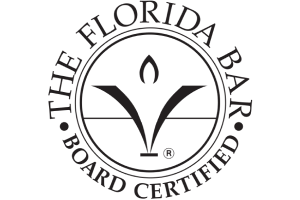The Effects on Voting Laws after the Shelby v Holder Supreme Court Ruling – 2
The Decision of the Appeal and the Supreme Court Case
In the Appeal that was argued in January, 2012 and decided in May of that year, the United States Court of Appeals for the District of Columbia Circuit agreed with the District Court and determined that based on the Opinion rendered of the granted summary judgment for the Attorney General, et al., the decision would not be struck down. However, as referenced in Court papers the Appeals Court also stated that even though “The Supreme Court had no occasion to resolve these questions,” they had warned that “the burdens imposed by Section 5 may no longer be justified by current needs and that its geographic coverage may no longer sufficiently relate to the problem it targets.”
The Supreme Court heard the case in January, 2013 after Shelby County was persistent with its view that Section 5 was “an antiquated and unnecessary infringement on state sovereignty.”
Oral arguments began in February, 2013, and the final decision of the Opinion was presented on June 25, 2013.
Despite the District and Appeal Court’s previous rulings, on behalf of the Petitioner, attorney Bert W. Rein stated that South had changed definitively. He noted that it was previously “questioned whether current remedial needs justified the extraordinary federalism and cost burdens of preclearance.” Counsel also said “Current needs have to generate the current burden… So what happened in 1965 in Alabama, that Alabama itself has said was a disgrace, doesn’t justify a current burden.” He also stated that considering current statistics “in terms of black registration and turnout, there’s no resemblance. We’re dealing with a completely changed situation” But Judge Ginsburg was quick to point out that “Congress was well aware that registration was no longer the issue… Congress said up front: We know that the registration is fine. That is no longer the problem. But the discrimination continues in other forms.”
Agreeing with Ginsburg and in rebuttal to Mr. Rein’s assertions, Counsel for the Respondent argued that in 2006, Congress correctly found that prevalent discrimination in voting has persevered in the regions protected by Section 5, and consequently they accurately resolved that there is an ongoing necessity for the preclearance solution. On the second part of the issue, it was maintained that Congress fittingly had come to the conclusion that elsewhere in the country the matter of voting discrimination is currently much less severe, and under that assumption Congress accurately decided that the geographic coverage portion of Section 5 shouldn’t be reformed.
The Supreme Court’s assignment was to hear arguments and pass down decisions mostly relating to two Sections of the Voting Rights Act, as well as the constitutionality of Congresses 2005 renewals of portions of these two Sections. The basic questions being:
Are Sections 4 and 5 outdated and do the problems that existed in 1965 still currently apply, in addition to answering the question if these areas of the law remain Constitutional as they were written and since amended? Does Section 2, which is permanent, and has no expiration date as do the other two provisions, do enough to compensate for any decisions and/or alterations made regarding Section 5 which is dependent on Section 4 to remain effective?
To fully understand the Court’s task, a brief explanation of the Sections affected by the Supreme Court’s decision is listed below in order of importance regarding this case.
Section 5: prohibits certain jurisdictions known as “covered areas” from making any changes in the voting process without approval by the U.S. Attorney General or a panel of three judges from the U.S. District Court.
Section 4: specifies the standard that determines “covered jurisdictions” under Section 5. Without Section 4(b) no jurisdiction will be subject to Section 5 preclearance without Congress enacting a new coverage standard. Section 4 is basically the formula that defines what states, counties or sub-jurisdictions Section 5 applies to. This formula being in place has direct effects on Section 5’s abilities.
Section 2 In reference to the commentary of this article, under Section 2, the provisions presented in Section 5 may still be upheld without Section 4’s formula in place, but instead of being as it’s currently stated, solely necessitating the approval of the U.S. Attorney General or the U.S. District Court, challenges would have to be filed in District court in order for Section 5 rules to be applied. Law suits of this nature will take additional time, cost, and litigation. Although a preliminary injunction under section 2 can be filed easily enough, there is no assurance that a judge will rule sympathetically to a suit that would reinstate the preclearance associated with Section 5. This would open the possibility of giving jurisdictions the opportunity to change voting laws preceding elections without a resulting decision being determined before an approaching election takes place.
Next: Supreme Court Oral Argument Highlights and Excerpts, Click here




